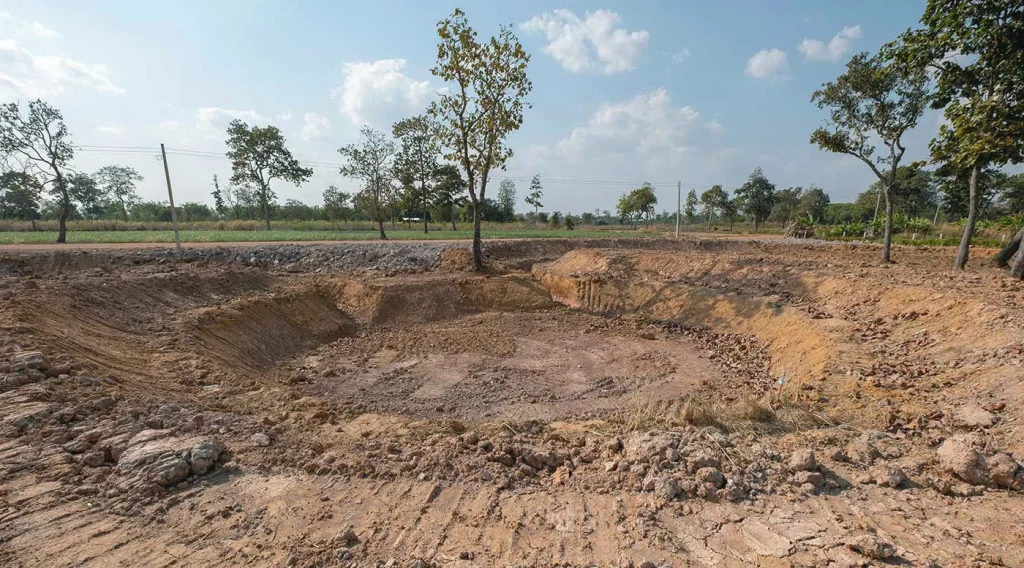Building a large pond on your property can enhance its beauty and provide a serene oasis for relaxation. Whether you want to create a habitat for fish and wildlife or simply add a stunning water feature to your landscape, constructing a pond requires careful planning and execution. In this guide, we will walk you through the steps to build a large pond on your property.

Credit: rethinkrural.raydientplaces.com
Step 1: Planning and Design
Before breaking ground, it is essential to plan and design your pond. Consider the size and shape of the pond, the depth, and the location on your property. Determine the purpose of the pond and whether you want to include aquatic plants or fish.
Key Considerations:
- Size and shape of the pond
- Depth and location
- Purpose of the pond
- Inclusion of aquatic plants or fish
Sketch out your pond design, taking into account the natural flow of water and any existing features on your property. Consider factors such as sunlight exposure, drainage, and accessibility for maintenance.
Step 2: Excavation
Once you have finalized your pond design, it’s time to start digging. Excavation is a critical step in building a large pond. Use a backhoe or excavator to dig out the shape of the pond according to your design specifications.
Ensure that the sides of the pond slope gradually to prevent erosion and allow easy access for wildlife. Create shelves or ledges at different depths to accommodate aquatic plants and provide habitat for fish.
Step 3: Installing a Liner
To prevent water from seeping into the soil, you will need to install a pond liner. Choose a high-quality liner that is durable and puncture-resistant. Spread the liner carefully over the excavated pond, ensuring that it covers the entire surface area.
Smooth out any wrinkles or folds in the liner and secure the edges with rocks or soil. Make sure the liner is properly fitted to prevent leaks and maintain the water level in your pond.

Credit: www.youtube.com
Step 4: Adding Water and Filtration
Once the liner is in place, it’s time to fill your pond with water. Use a garden hose or a water truck to slowly fill the pond, allowing the water to settle and the liner to conform to the shape of the pond.
Install a filtration system to keep the water clean and clear. Consider adding a pump, skimmer, and biological filter to maintain optimal water quality and create a healthy ecosystem for aquatic life.
Step 5: Landscaping and Finishing Touches
Enhance the beauty of your pond by landscaping the surrounding area. Plant native vegetation, such as water lilies and cattails, around the edges of the pond to create a natural habitat for wildlife and improve the aesthetic appeal.
Add rocks, boulders, and driftwood to create a more natural look and provide shelter for fish and other aquatic creatures. Consider installing a fountain or waterfall for added visual interest and the soothing sound of running water.
Step 6: Maintenance and Care
Regular maintenance is essential to keep your pond healthy and thriving. Monitor the water quality, remove debris, and trim aquatic plants as needed. Inspect the liner for any signs of damage and repair leaks promptly.
During the winter months, consider installing a pond heater or aerator to prevent the water from freezing completely and harming aquatic life. Be vigilant about algae growth and use algaecides or natural solutions to maintain water clarity.
Conclusion
Building a large pond on your property can transform your landscape and create a tranquil retreat for relaxation and enjoyment. By following these steps and guidelines, you can design and construct a beautiful pond that will attract wildlife, provide habitat for aquatic plants and fish, and enhance the overall aesthetic of your property.
Remember to plan carefully, invest in quality materials, and prioritize maintenance to ensure the long-term success of your pond project. With dedication and proper care, your large pond will become a focal point of your property and a source of joy for years to come.





